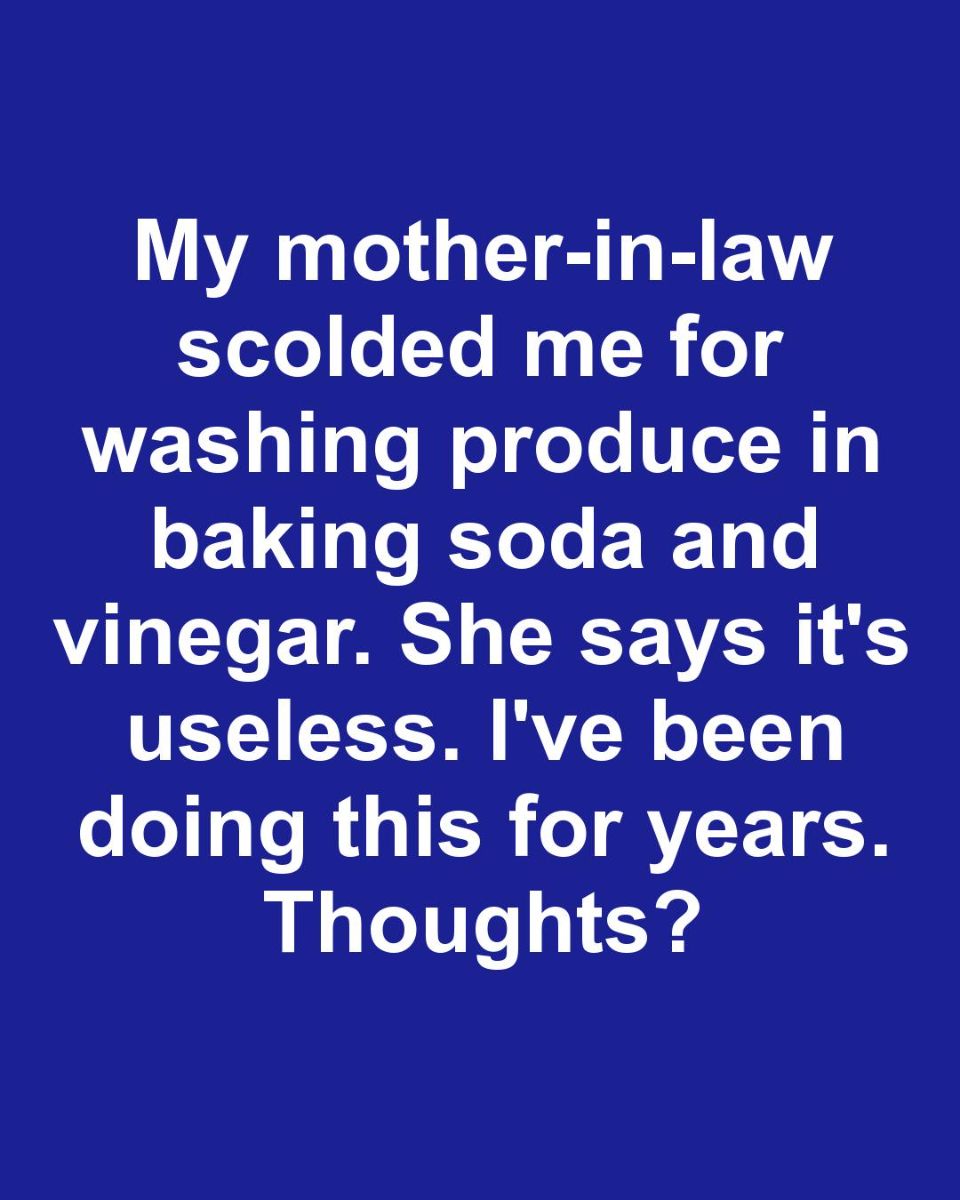In recent years, the topic of how best to clean fruits and vegetables has become a subject of debate among health-conscious individuals and families. With increasing awareness about pesticides, bacteria, and other contaminants on produce, many people are seeking effective methods to ensure their food is safe to eat. One popular method involves using baking soda and vinegar, but not everyone agrees on its efficacy. This article explores the different perspectives on this cleaning technique, including a personal anecdote about a mother-in-law's skepticism.
Understanding the Purpose of Washing Produce
Washing produce is an essential step in food preparation aimed at removing dirt, bacteria, and pesticide residues. While rinsing with water is the most common practice, some individuals seek additional cleaning power to ensure their fruits and vegetables are as clean as possible. The goal is to reduce the risk of foodborne illnesses and exposure to potentially harmful chemicals.
Advertisement
Common Methods for Cleaning Fruits and Vegetables
There are several methods people use to clean their produce. These include rinsing under running water, using commercial produce washes, soaking in saltwater, and employing natural solutions like baking soda and vinegar. Each method has its proponents and critics, with varying opinions on their effectiveness and safety.
The Science Behind Baking Soda and Vinegar
Baking soda (sodium bicarbonate) and vinegar (acetic acid) are both known for their cleaning properties. Baking soda is mildly abrasive and can help dislodge dirt and residues, while vinegar has antimicrobial properties that can kill certain bacteria. However, when combined, they react to form carbon dioxide and water, which may dilute their individual cleaning powers.
Arguments Against Using Baking Soda and Vinegar
Critics argue that the combination of baking soda and vinegar may not be as effective as believed. The chemical reaction between the two neutralizes their properties, potentially reducing their ability to clean effectively. Additionally, some experts suggest that rinsing with water alone is sufficient for most produce, and that more complex methods may not provide significant additional benefits.
Benefits of Using Baking Soda and Vinegar for Cleaning
Proponents of using baking soda and vinegar highlight their natural and non-toxic nature, making them a safer alternative to chemical-laden commercial cleaners. Baking soda can help remove waxy coatings on fruits, while vinegar's acidity can help kill certain bacteria. For those concerned about chemical residues, this method offers peace of mind.
Expert Opinions on Produce Cleaning Methods
Experts in food safety and nutrition have varying opinions on the best methods for cleaning produce. Some endorse the use of baking soda and vinegar for their natural properties, while others recommend sticking to water rinsing or using commercial produce washes. The consensus is that thorough washing, regardless of the method, is key to reducing contaminants.
Personal Experience: Why I Choose Baking Soda and Vinegar
For years, I have used baking soda and vinegar to clean my produce, believing in their natural cleaning power and safety. Despite my mother-in-law's skepticism, I find comfort in knowing that I am taking extra steps to protect my family's health. The method is simple, cost-effective, and aligns with my preference for natural solutions.
Alternative Methods for Washing Produce
Aside from baking soda and vinegar, other popular methods include using lemon juice, hydrogen peroxide, or commercial produce washes. Each method has its own set of advantages and potential drawbacks, and individuals may choose based on personal preference, availability, and perceived effectiveness.
Advertisement
Conclusion: Evaluating the Effectiveness of Different Methods
Ultimately, the choice of how to wash produce is a personal one, influenced by individual beliefs, experiences, and priorities. While baking soda and vinegar have their supporters and detractors, the most important factor is ensuring that fruits and vegetables are thoroughly cleaned before consumption. Whether using natural solutions or sticking to water, the goal remains the same: to enjoy fresh, safe, and healthy produce.

